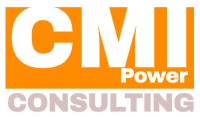CULTURE OF CONTINUOUS LEARNING AND IMPROVEMENT
People Development Concept
Customer needs
Business +25M euro yearly turnover
The request comes from a client in the electrical component manufacturing sector, facing challenges in staff retention, finding skilled personnel and the development of industry-specific competencies and technological processes.
After the pandemic period, two major factors exacerbate the challenges in securing skilled and specialized workforce for existing companies. Firstly, the job market is becoming increasingly competitive, with the availability of qualified workforce decreasing in many countries regardless of geographical location. This trend makes finding suitable personnel a critical challenge for companies.
In addition to this trend, there is an acceleration of transformations in the era of digitization, robotics, and automation. While these technologies lead to a reduction in the numerical workforce, they increase the need for specialized personnel in areas such as smart production, digitalization, IT, programming, automation, and others. This type of expertise becomes increasingly crucial for companies aiming to remain competitive and adapt to the evolving market demands.
Implementation
Together with the client, it was agreed to implement a new concept for staff development comprising six elements, ensuring the efficient integration of new employees, employee development planning, needs identification, periodic evaluation, and team development.
The following elements were implemented:
- Training Center: The Training Center serves as a dedicated facility or platform within the organization where employees receive various types of training and development programs. It provides a centralized location for learning activities, equipped with resources, materials, and expert trainers to facilitate effective skill-building and knowledge enhancement for employees at all levels.
- People Development Path: Together with the company’s management team, a matrix has been developed that encompasses the entire list of roles within the company and the comprehensive training package required for the automotive industry and legal requirements (49 necessary courses have been defined). As a result, a matrix format has been established to define the perfect „profile” for each role, outlining the required training package needed to achieve the maximum level of training/development.
- Training Program: The Training Program encompasses a series of structured learning initiatives designed to enhance employees’ skills, knowledge, and competencies in specific areas relevant to their roles and career goals. These programs may include workshops, seminars, online courses, on-the-job training, and certifications tailored to address individual and organizational learning needs.
- Team’s Development: In addition to individual development, there is also a need for team development and finding the best formula to elevate collaboration and performance levels within and between teams. To achieve this, an annual evaluation process between departments has been implemented. Under the cloak of anonymity, each person in the company has the opportunity once a year to conduct an evaluation of colleagues and departments they interact with.
- Target Agreement: The purpose of this activity is to ensure individual and team objectives for each individual, a clear understanding of the annual objectives to be achieved by each employee, and also to provide a feedback system aimed at improvement. The objectives included in the Target Agreement Sheet, are related to measurable results for the process for which the employee is responsible. Additionally, three competencies are included, which the employee, together with their superior, will focus on improving in the following year. To develop these competencies, the superior plans training programs to support the employee.
Talent Management: To ensure the retention of talents within the company (also referred to as „Key Players”) and to identify individuals with potential, the „Talent Management” element has been implemented. At least once a year, each employee is evaluated by their superior and classified into one of the following categories: Alpha, Wolves, Bee, Black Sheep. Based on periodic evaluations of personnel, individuals who possess the necessary competencies for promotion are identified, as well as individuals who either are not suitable for their current position or require support for development.
By integrating these elements into the people development concept, organizations can create a robust framework for fostering employee growth, engagement, and productivity while aligning individual development with organizational objectives and fostering a culture of continuous learning and improvement.
Outcomes
The successful implementation of all elements of the PDC (Personal Development Concept) was reflected in the following performance indicators:
- The growth rate of qualifications monitored through the Development Path Matrix in the first two years increased by 10%.
- The level of competencies in the Competency Matrix recorded an increase of 6%.
- The degree of integration of new employees, measured by the rate of turnover of new employees in the first month of employment, was significantly reduced by 30%.
- The increase in employee retention, with a 10% increase in the first year of implementing the PDC.
